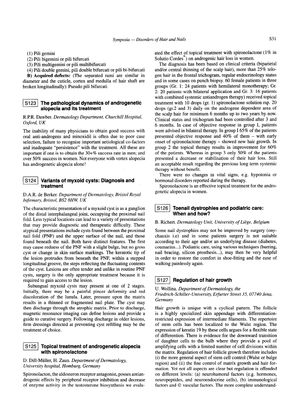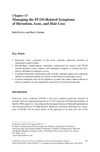Regulation of Hair Growth

TLDR The document concludes that treatments like oral anti-androgens, minoxidil, and topical spironolactone can be effective for hair loss in men and women.
The document discusses various topics related to hair and nail disorders, as well as treatments for androgenetic alopecia and other conditions. Specifically, it mentions the use of oral anti-androgens and minoxidil for androgenetic alopecia, noting that success rates can be over 50% in women and 30+% in men when proper case selection, recognition of aetiological co-factors, and persistence with treatment are applied. It also details a study on the topical treatment of androgenetic alopecia with spironolactone in women, involving 60 female patients divided into three groups. Group 1 had 24 patients with hemilateral monotherapy, Group 2 had 20 patients with bilateral application, and Group 3 had 16 patients with combined systemic antiandrogen therapy. The treatment lasted for a minimum of 6 months up to two years, with clinical status and trichogram controlled after 3 and 6 months. In Group 1, 65% showed an objective response, with 40% showing new hair growth, especially those with early onset of therapy. Group 2 saw improvement in 60% of patients, while Group 3 had 50% of patients experiencing a decrease or stabilization of hair loss. No changes in vital signs or hormonal disorders were reported during therapy, suggesting that spironolactone is an effective topical treatment for androgenetic alopecia in women. The document also touches on the regulation of hair growth, mentioning that hair follicles have a cyclical pattern and stem cells localized to the Wulst region. It suggests that understanding the mechanisms of hair growth regulation could lead to new therapeutic modalities in the future. Other topics in the document include nail dystrophies, podiatric care, myxoid cysts, and various conditions related to HIV and virology, but these are not the focus of the summary as per the user's request.




